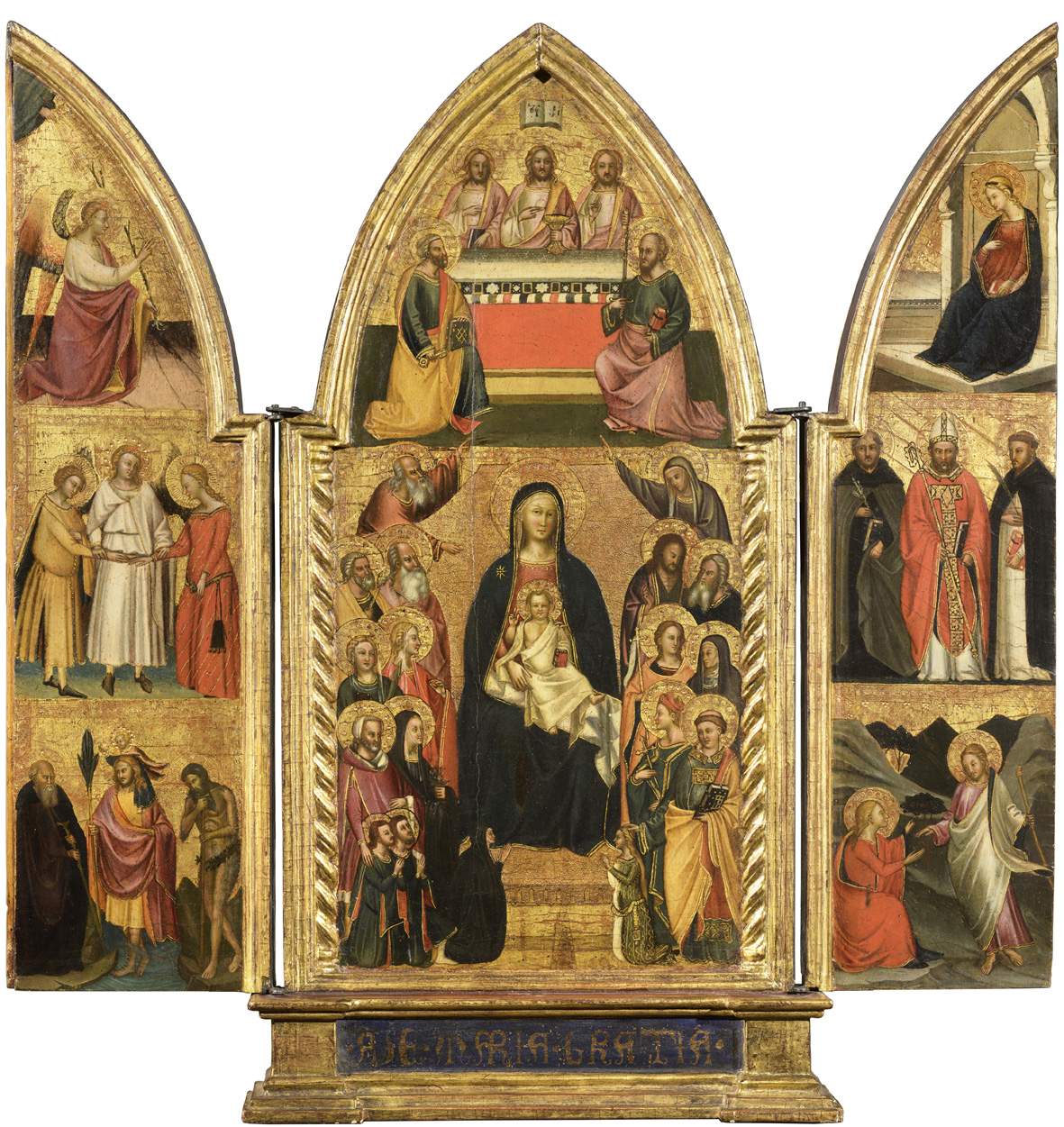Gothic glimmers: fourteenth-century art on display at Milan's Salamon Gallery
From November 11 to December 17, 2021, Galleria Salamon in Milan will host the exhibition Bagliori Gotici. From the Master of 1310 to Bartolomeo Vivarini, a project that comes after nearly two years of study by gallery owner Matteo Salamon and the scholars who have worked alongside him, with the aim of offering the public a path through two centuries of Italian painting, from the late 13th century to the masters of the Late Gothic period. The exhibition presents 18 paintings on panel of exceptional value: for the most part, we speak of “new acquisitions to studies,” although many of the works were already known to Federico Zeri (Rome, 1921 - Mentana, 1998), who had the relevant images in his photo library. In some cases, for example for Agnolo Gaddi’s Madonna and Child, one of the highlights of the exhibition, the panels were recognized as deserving a declaration of cultural interest (notified) by the Ministry of Culture.
The exhibition will start with an important panel by the anonymous artist known as the "Master of 1310," founder of the Pistoia school. The painting, considered by scholar Angelo Tartuferi to be a youthful proof of this brilliant author, is datable to 1303-1305, and bears witness to a persistent Gothic tradition in Italy, an alternative to Giotto ’s classicism and marked by clear French influences. The extreme rarity of the Master’s works from 1310 preserved in private collections (only one precious panel, formerly in the Chianti villa of the pop-star Madonna, was known so far) attests to the extraordinary relevance of this recovery. The Italian Trecento is probed through the analysis of a remarkable diptych by Jacopo del Casentino, an altarpiece by the unusual Giovanni Gaddi (Agnolo’s older brother), a Christ in Pity between Saints Margaret and John by the anonymous Sienese artist known as the Master of the Richardson Triptych, and two panels of the Bolognese school, a Madonna in Sorrows and a St. John the Evangelist, by Lippo di Dalmasio, a rare fourteenth-century Bolognese master. Also present is the dossal with the Last Judgment by Niccolò di Tommaso, clear evidence of the retrospective and almost ’neo-Byzantine’ character of painting in Tuscany after the plague of 1348.
To the long season of International Gothic, straddling the two centuries, belong a splendid altarpiece by the Florentine Cenni di Francesco di Ser Cenni, two delicate Madonnas by Lorenzo di Bicci and an incisive panel with St. Francis showing the stigmata by the Sienese Andrea di Bartolo, and again a Madonna and Child between Saints John the Baptist and John the Evangelist by the Portuguese painter Álvaro Pires de Évora, who was active for a long time in Italy in the early 15th century and whose personal story turns out to be emblematic of the cultural trajectories traced by artists at this stage. A pupil of Gentile da Fabriano in Venice was likely the anonymous artist referred to by Zeri as the “Master of the Ludlow Annunciation,” whose refined Madonna and Child Enthroned is presented in the exhibition. These in the lagoon embody the trait d ’union between the artists of the Late Gothic period and the masters of the early Renaissance, starting with Antonio Vivarini, who in his first activity seems to take inspiration from his models. Antonio Vivarini’s Christ in Pity interprets the humanistic culture of Padua in a bluntly linear sense, while the similar subject later made by Bartolomeo Vivarini shows how even in Venice, in the second half of the 15th century, the perspective conception of form of the Florentine masters had taken root. The exhibition closes with an intense Crucifixion by Giovanni Antonio Bellinzoni from Pesaro (but of Felsina culture) and a Madonna and Child with Four Saints by the Florentine Ventura di Moro, a panel from the mid-15th century but which still seems to affirm, with admirable historical awareness, the relevance of the tradition of the previous century.
The exhibition project is accompanied by the valuable edition of a volume entitled The early career of Agnolo Gaddi and a new Madonna and Child, edited by Angelo Tartuferi and dedicated precisely to the aforementioned painting by Agnolo Gaddi: the work is a dazzling testimony to the artist’s early activity, marked by preciousness in the coloring that hints at his training in Florence with Giovanni da Milano and Giottino.
The culture of Italian “primitives” in recent decades seems to have found expression mainly in Anglo-Saxon countries, nonetheless following the tradition imprinted by the taste of the great American collectors of the late 19th century. However, already on the occasion of the Tabula picta exhibition in autumn 2018, Matteo Salamon’s gallery intends to propose itself as a reference in the sector by showing rigor in the choice of works, which the gallery points out for the correctness of the attributions, indicated by the greatest specialists of Italian painting between the 14th and 15th centuries, for the excellent state of preservation, for the unquestionable formal quality and for the illustrious provenance from famous private collections.
For all information you can visit the Salamon Gallery website.
Pictured: Cenni di Francesco, Portable Tabernacle (1375-1380; tempera on panel, gold ground, 77 x 73.5 cm open doors, 77 x 35.7 cm closed doors)
 |
| Gothic glimmers: fourteenth-century art on display at Milan's Salamon Gallery |
Warning: the translation into English of the original Italian article was created using automatic tools. We undertake to review all articles, but we do not guarantee the total absence of inaccuracies in the translation due to the program. You can find the original by clicking on the ITA button. If you find any mistake,please contact us.





























